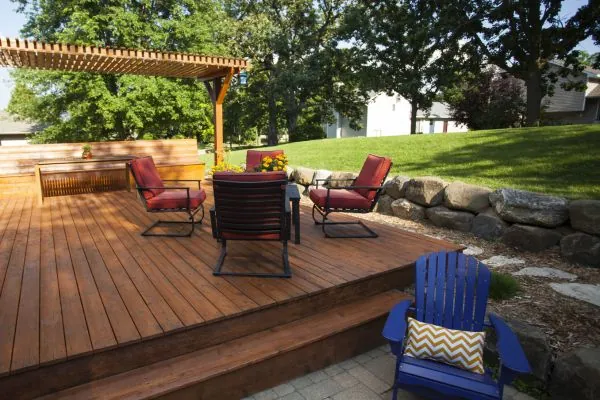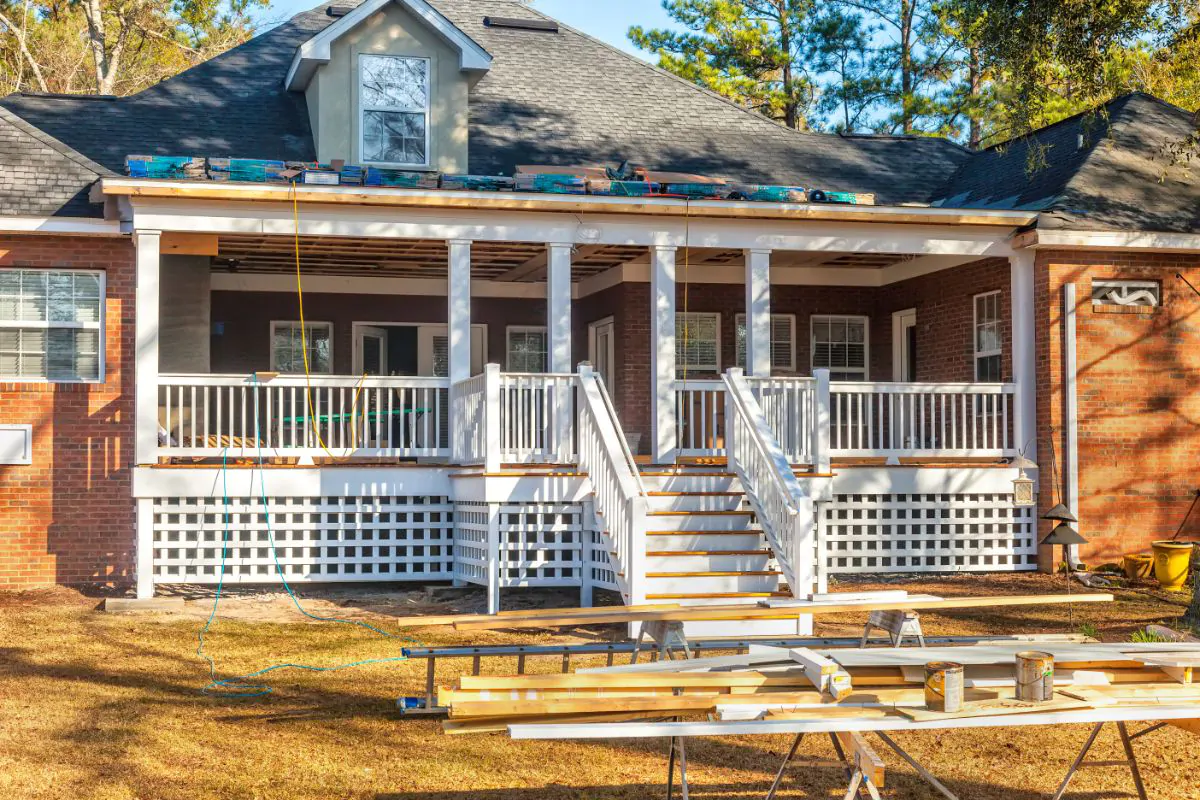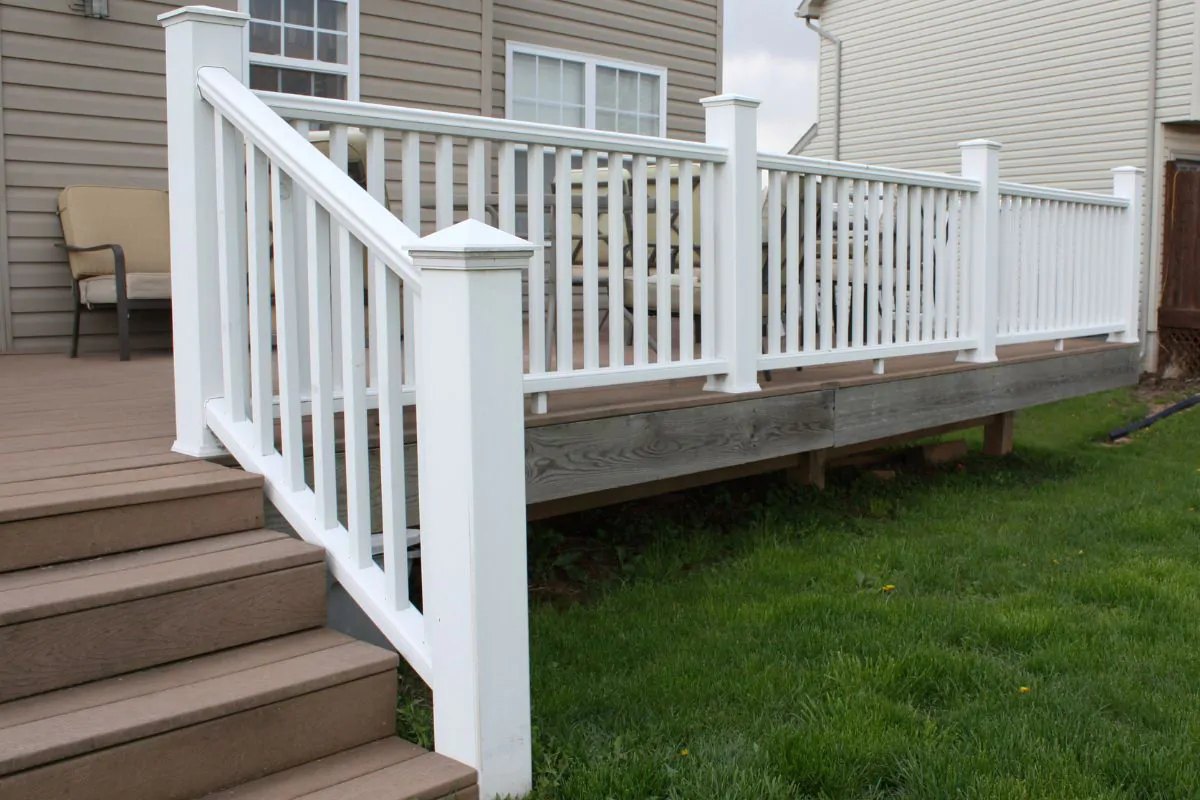When it comes to constructing a deck, safety and compliance are paramount, and one crucial element is often at the forefront: the railing height.
Navigating the regulations around what constitutes an appropriate and lawful height for deck railings is not only a matter of following the law but also about ensuring the safety of friends and family who will enjoy the outdoor space.
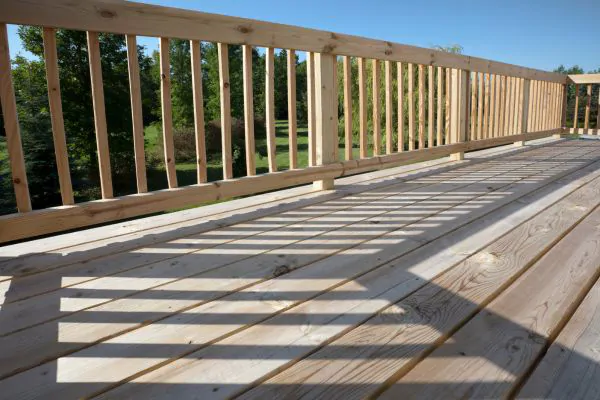
Notably, the standard railing height can differ depending on state and local codes across the United States.
This guide breaks down the key components of the deck rail height code, helping homeowners and builders alike adhere to the required safety standards.
Keep reading to unlock the answer to the question, “What are the railing height requirements for a deck?” that will elevate the safety and integrity of your deck project.
Understanding Deck Railing Height Requirements in 2024
With the advent of new safety standards, homeowners and builders must familiarize themselves with the stipulations related to the height of a deck railings. As decks become an extension of living spaces, safety parameters, including the standard height, ensure a secure environment for families and guests. The current consensus remains that guardrails are essential for decks above certain heights to prevent falls and accidents.
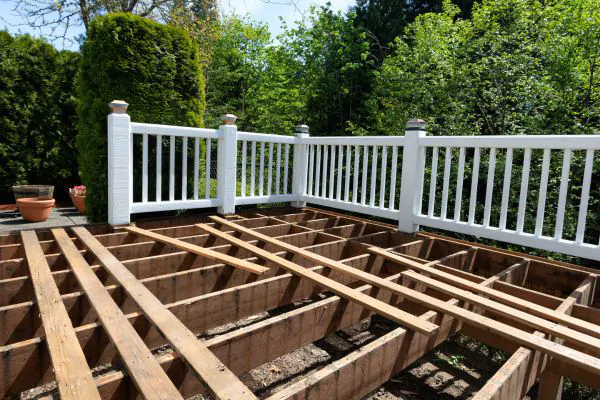
When installing a new deck or refurbishing an old one, finding out what the railing height requirements are is imperative. Local codes may vary, but they all revolve around the central goal of safety. The code for deck railing height usually specifies a minimum height to create a barrier that both adults and children can rely on to prevent inadvertent tumbles.
Professionals emphasize the importance of adhering to the deck rail height code, which serves as the baseline for construction and inspection protocols. While the minimum deck railing height is a critical factor, other aspects like material durability, post spacing, and baluster framework also play significant roles in maintaining the safety and integrity of deck structures.
Why Does Deck Railing Height Matter?
Deck railing height transcends mere aesthetics; it anchors the safety measures of outdoor spaces. A raised deck without proper barriers poses a risk, transforming a leisure area into a potential hazard zone, particularly for households with young children or elderly residents who may be prone to stumbling. Ensuring the right height for railings mitigates these risks, providing peace of mind.
Building codes stipulate the minimum requirements, but they do not forbid homeowners from opting for greater height should they deem it necessary for extra safety or privacy. These regulations are drafted with comprehensive safety analysis and accident prevention in mind, holding the welfare of deck users as a paramount concern. Hence, the acknowledged standard height establishes a universal safeguard across diverse deck designs and locations.
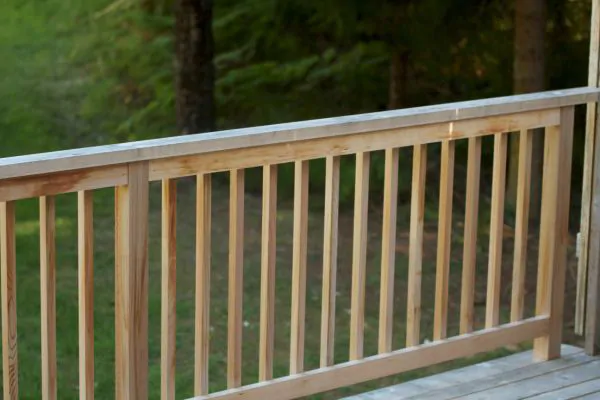
Compliance with railing height requirements is not only about adhering to legal obligations; it symbolizes a commitment to occupant safety. By maintaining the deck rail height code, individuals demonstrate due diligence in protecting all who step onto their deck. Non-compliance, conversely, can lead to severe consequences ranging from fines to increased liability in the unfortunate event of an accident.
Standard Deck Railing Heights Across the U.S.
Acknowledging the importance of regional variations, the delineation of deck railing height requirements across the United States reflects the understanding that not all decks will face identical circumstances.
From the gusty winds on coastal properties to the dense snow in northern climates, the necessity for sturdy and appropriate railing heights becomes clear.

In exploring the variances in these requirements, one must consider both the legally prescribed minimums and the practical aspects that tailor a deck’s design to its environmental and individual demands.
Selecting the appropriate deck railing height transcends obligatory codes; it involves assessing personal preferences aligned with safety protocols to cater to distinct needs.
This subtext lays the groundwork for recognizing differing regional mandates and the nuances of choosing the most suitable railing height for a deck’s specific context.
· Variances in Deck Railing Height Requirements
Despite a general framework provided by national codes, local jurisdictions implement their own modifications to deck height regulations, reflecting the distinctive challenges posed by their geographical areas. These variations account for factors such as topography, climate, and local building practices, with some regions requiring higher barriers due to increased wind speeds or elevation differences. Builders must consult local building codes to ensure their deck designs meet the specific requirements of their area, affirming a commitment to both compliance and safety.
· Choosing the Right Deck Railing Height for Your Needs
Securing the optimal deck railing height involves a blend of meeting legal standards and recognizing individual requirements for safety and aesthetics. Owners are encouraged to assess their specific situation, taking into account not only the deck’s usage patterns but also any exceptional views or architectural elements that might influence their choice. Working with a seasoned contractor who understands the nuances of local codes and personal preferences can guide homeowners to a harmonious balance between compliance and functionality.
When to Consult a Professional About Deck Railing Height
Navigating the intricacies of deck railing height regulations can often be as complex as the design of the deck itself.
As homeowners contemplate adding or renovating their outdoor spaces, questions surrounding the legal and safety implications of railing height come to the forefront.
Is there a specific code that one must adhere to when determining the appropriate height for deck railings?
Finding the answer isn’t always straightforward, given the variations across jurisdictions.
It is crucial to understand the implications of non-compliance with these regulations, including potential penalties and risks.
Similarly, homeowners wishing to infuse their decks with a personal touch might ponder the possibilities of customization.
Furthermore, the question of whether a railing is obligatory for all decks arises, along with the maintenance frequency required to maintain compliance and assure long-term safety.
Such queries beckon a deeper look into best practices and a professional’s guidance to navigate the legalities and personal choices associated with deck railing heights.
Conclusion
In conclusion, adhering to deck railing height regulations is vital for ensuring the safety of those using outdoor deck spaces.
The minimum height standards set by local codes form the foundation for preventing accidents and falls, especially in households with young children or the elderly.
Compliance not only reflects a legal obligation but also a homeowner’s commitment to the well-being of family and guests.
Navigating the variations in local regulations and integrating personal customization requires professional expertise, ensuring both legal adherence and personal preference are met harmoniously.
Regular inspections and maintenance further reinforce the safety and longevity of deck railings, cementing their role as a critical aspect of deck construction and design.
FAQ on Railing Height
1. Is there a code for deck railing height?
Indeed, a general set of guidelines dictates the specific parameters for railing heights. These requirements, encapsulated in residential building codes, serve as a mandatory baseline for ensuring the safety and conformity of deck constructions nationwide. Builders and homeowners must adhere to these established norms that provide the blueprint for the minimum safe deck railing height.
2. How do I find the deck railing height code for my area?
Locating the specific deck railing height code applicable to one’s geographical region typically necessitates consulting the local building department or accessing their online resources. Homeowners may also source current standards through a certified local contractor, whose expertise in navigating local ordinances can streamline the process of incorporating lawful requirements into a deck’s design and construction.
3. What happens if I don’t comply with deck railing height regulations?
Ignoring the prescribed deck railing height regulations can attract significant penalties, including fines, and may lead to mandated modifications at the homeowner’s expense. Furthermore, non-compliance can amplify liability in the event of an accident, as adherence to building codes is a critical aspect of homeowner responsibility. It is vital for individuals to grasp that meeting these safety standards is not just a legal formality but an essential safeguard to protect against potential injurious outcomes.
4. Can I customize the deck railing height based on personal preference?
Customization of deck railing height is permissible within the confines of the minimum standards established by local building codes. Homeowners may opt for higher railings if desired for privacy, aesthetics, or additional safety measures, provided they do not impede any other regulatory requirements like maintaining visibility in certain areas. Engaging with a professional ensures that personalization is safely implemented, aligning with legal mandates while achieving the homeowner’s vision for their outdoor space.
5. Can I install a deck without a railing?
The option to forego the installation of a deck railing is often contingent on the deck’s elevation above ground level. Municipal regulations typically permit decks that are specific inches or less in height to remain without railings; however, higher structures universally mandate the implementation of railings as a critical safety feature. Property owners should examine their local building codes to determine the allowable height before deciding against incorporating a railing system into their deck’s design.
6. How often should I check and maintain my deck railing height to ensure compliance?
Regular inspections and maintenance are vital for ensuring deck railings remain compliant with safety standards. Owners should perform assessments at least annually or following severe weather events, as these conditions can affect the integrity and height of the railing system. Working with a professional for periodic evaluations can help in identifying any adjustments needed to maintain both the structural soundness and adherence to the current code for deck railing height minimums.



